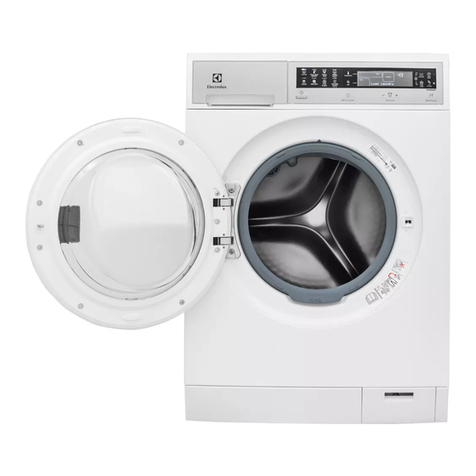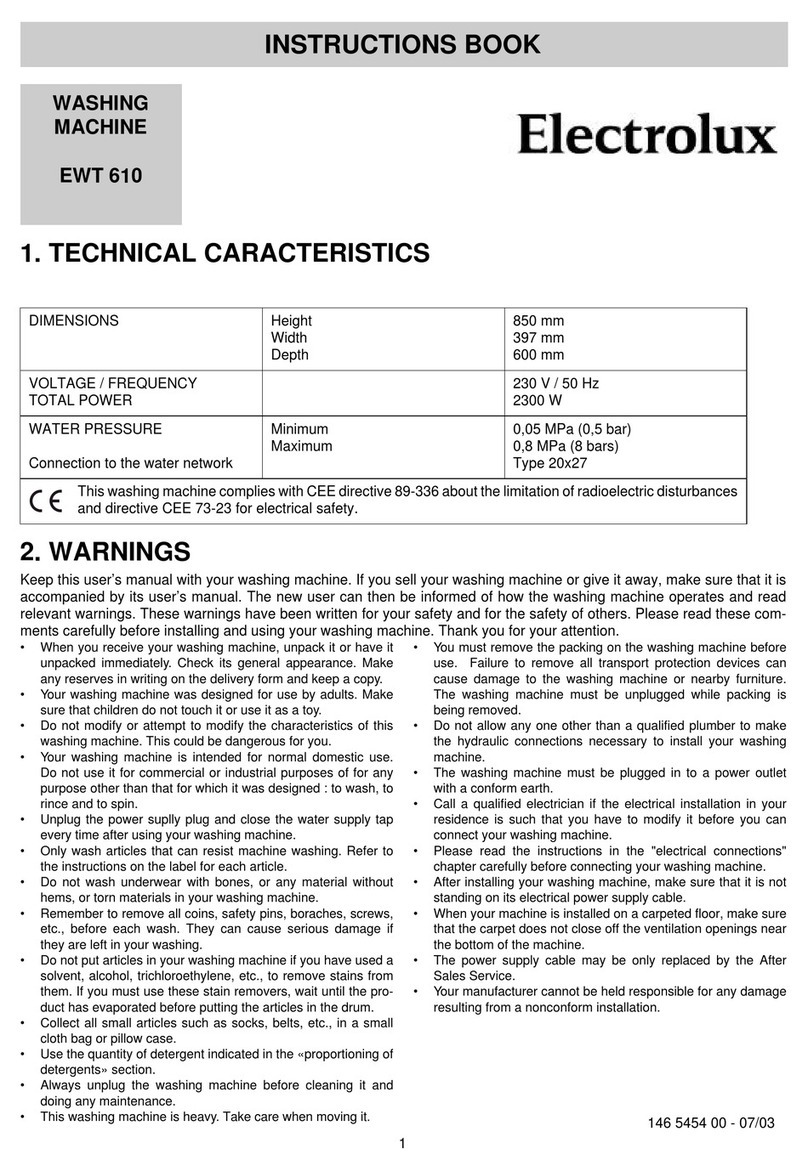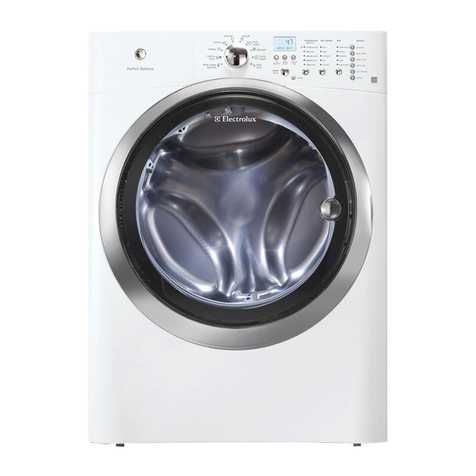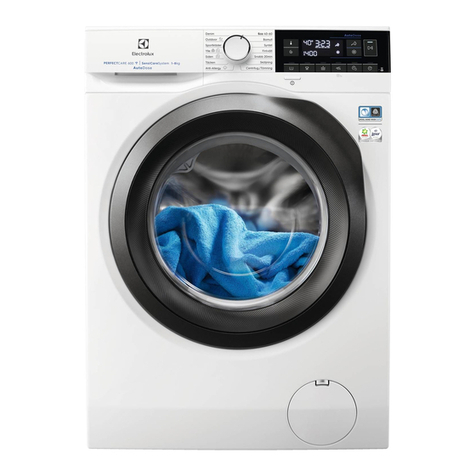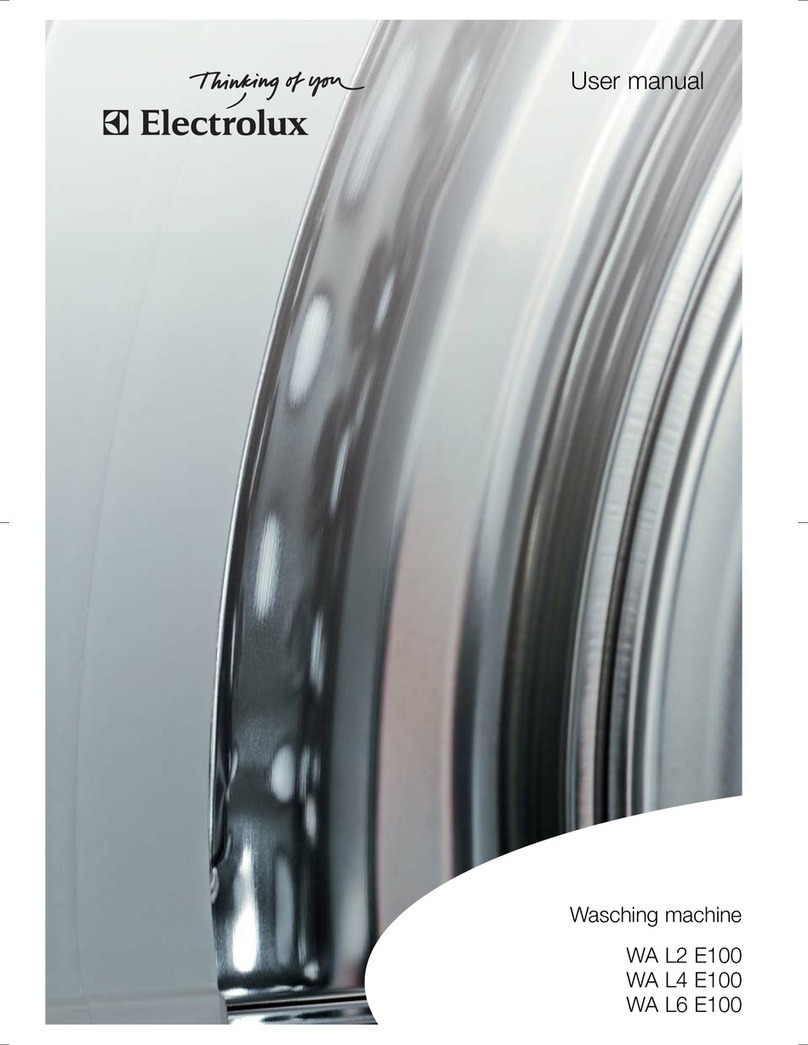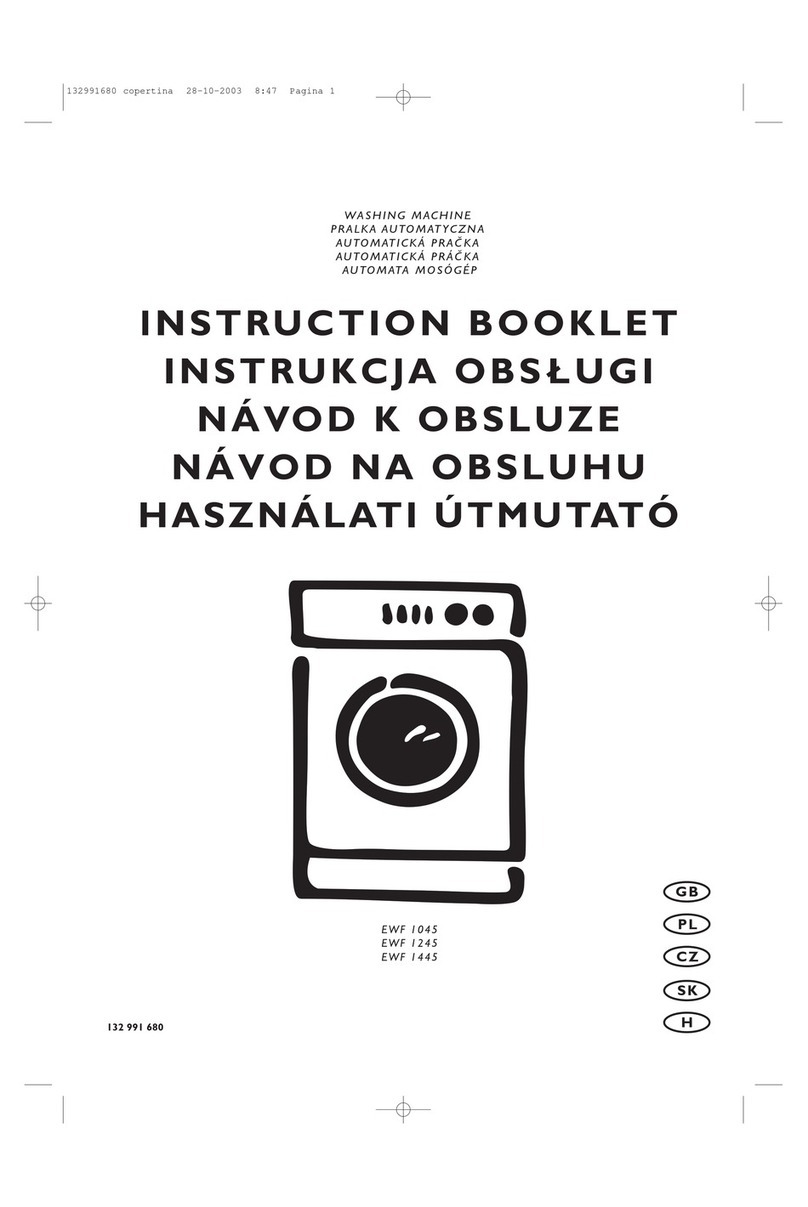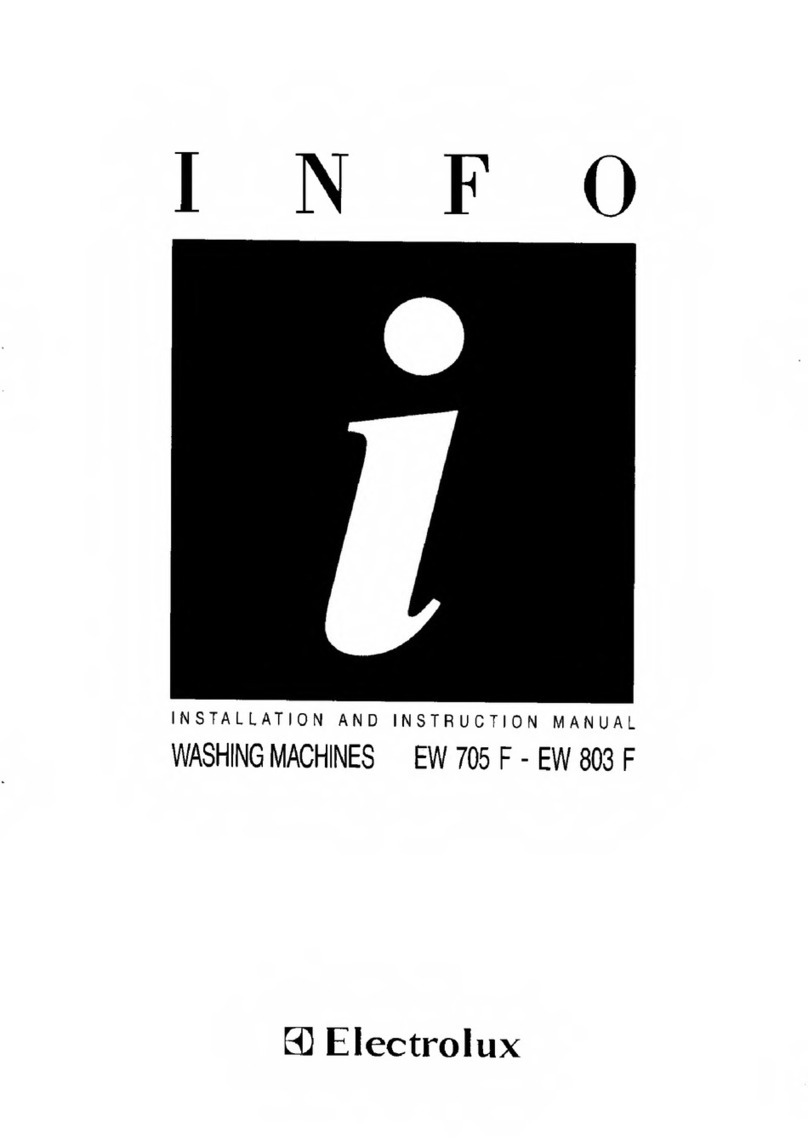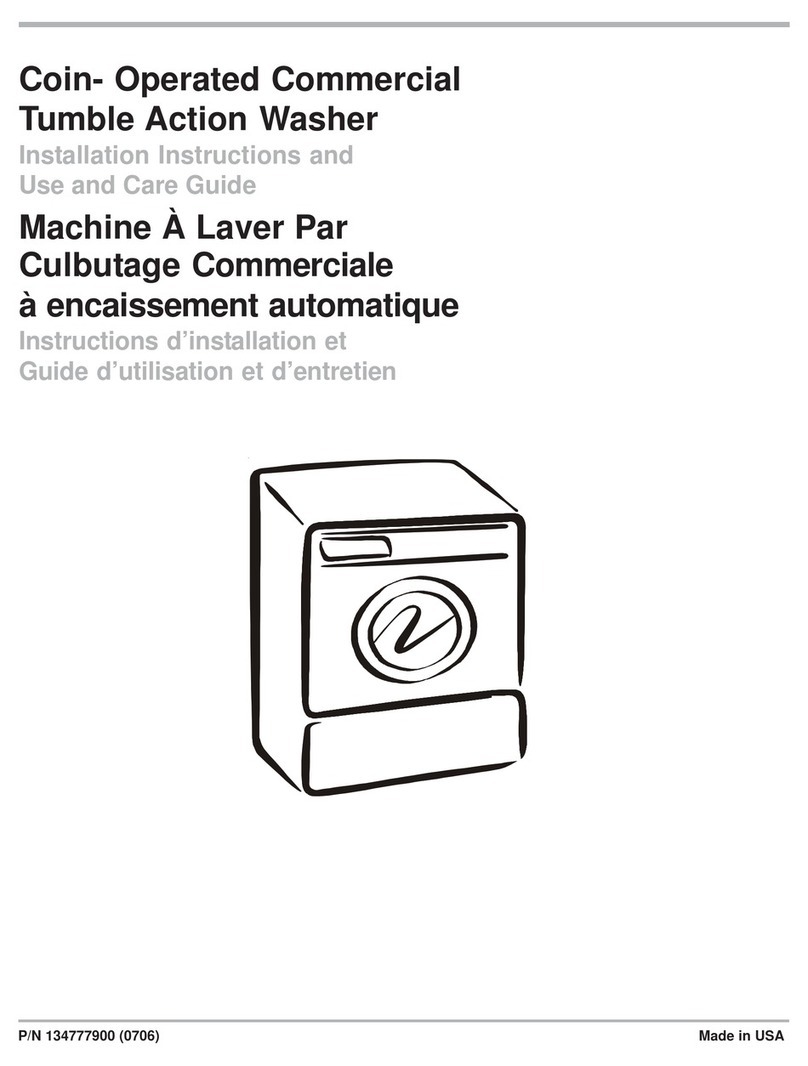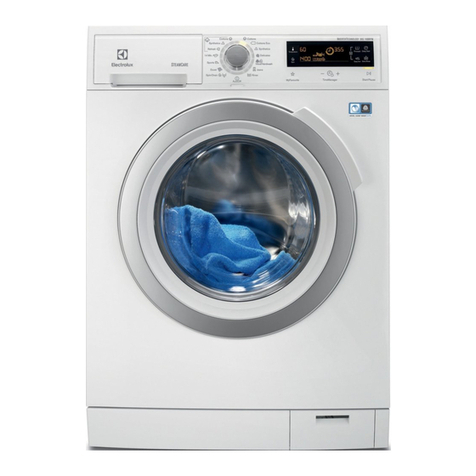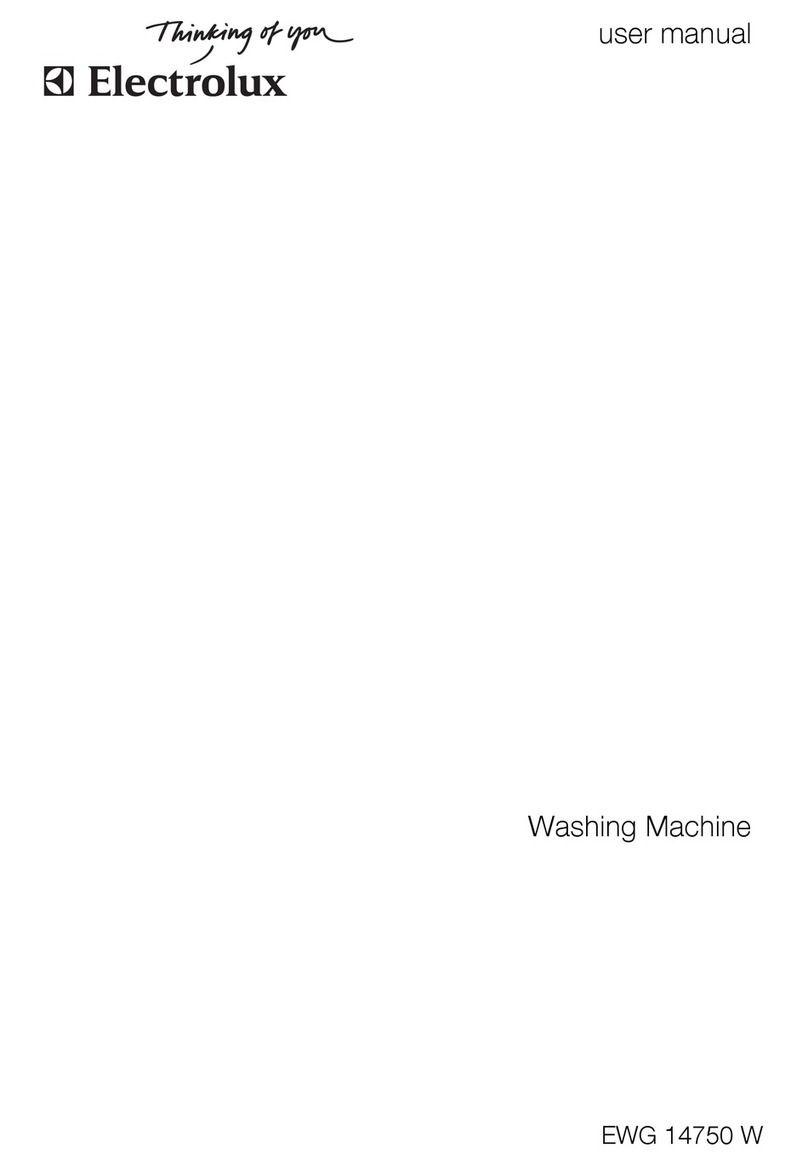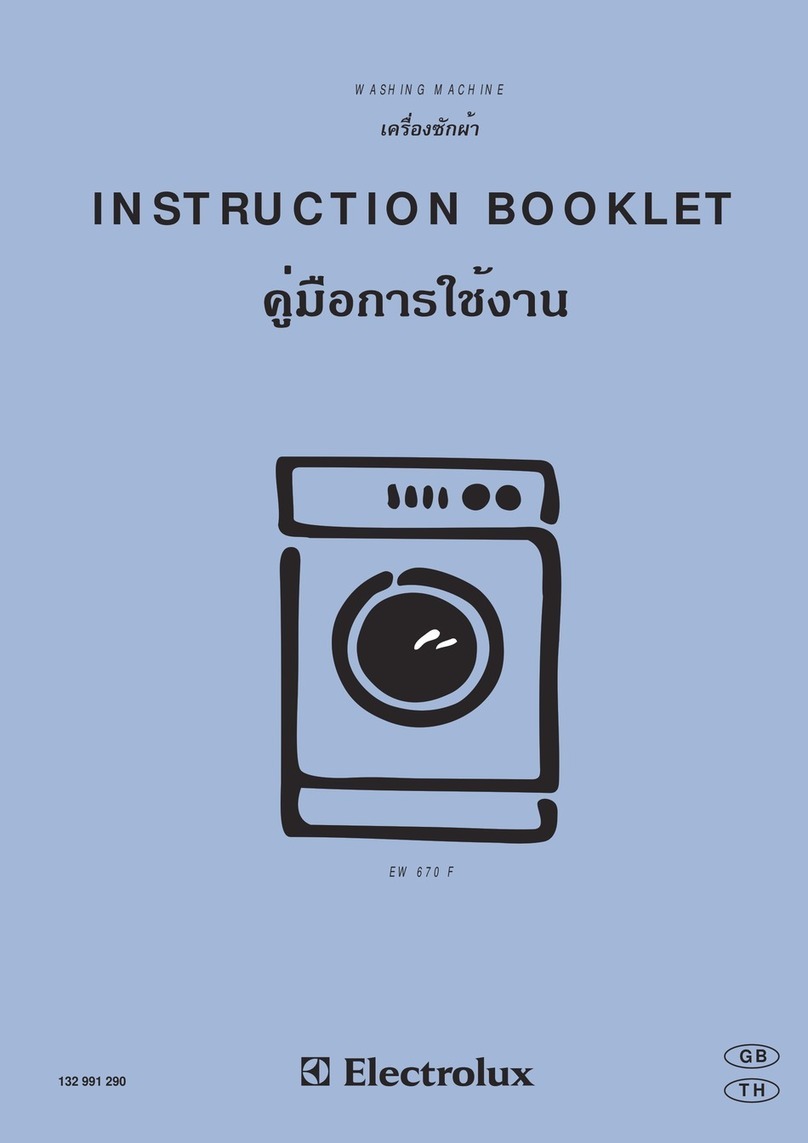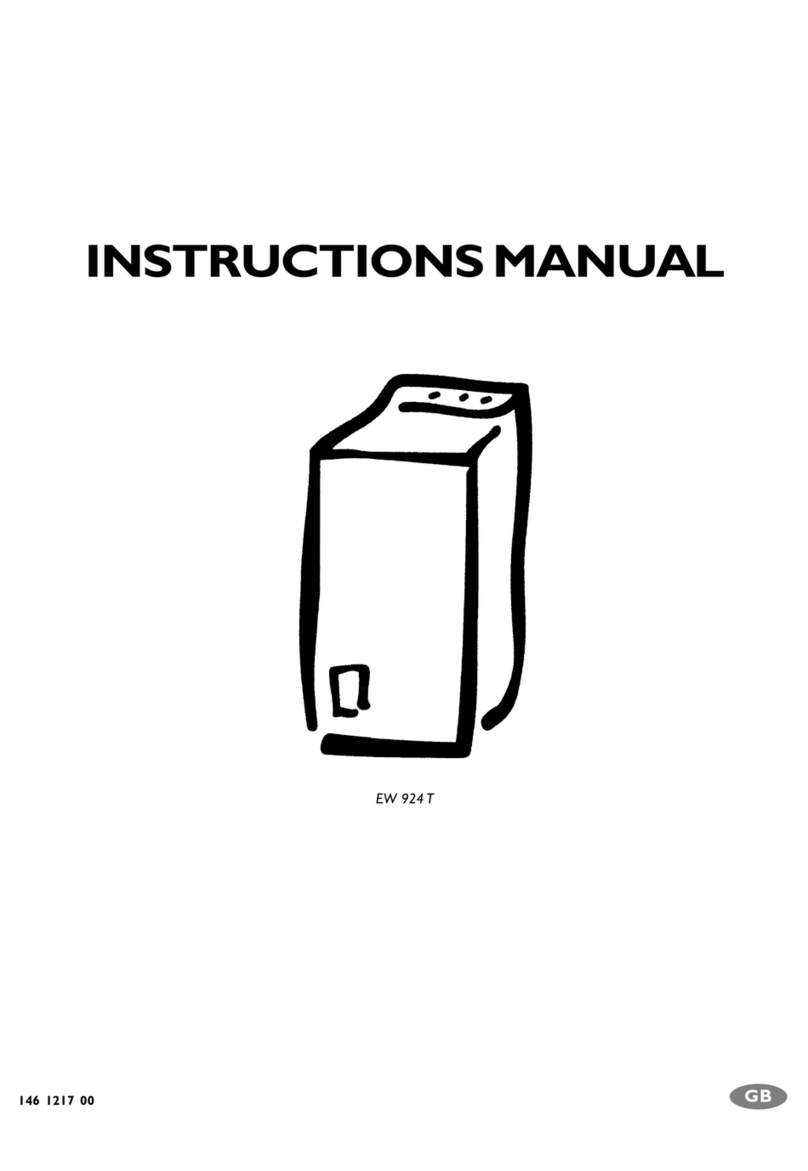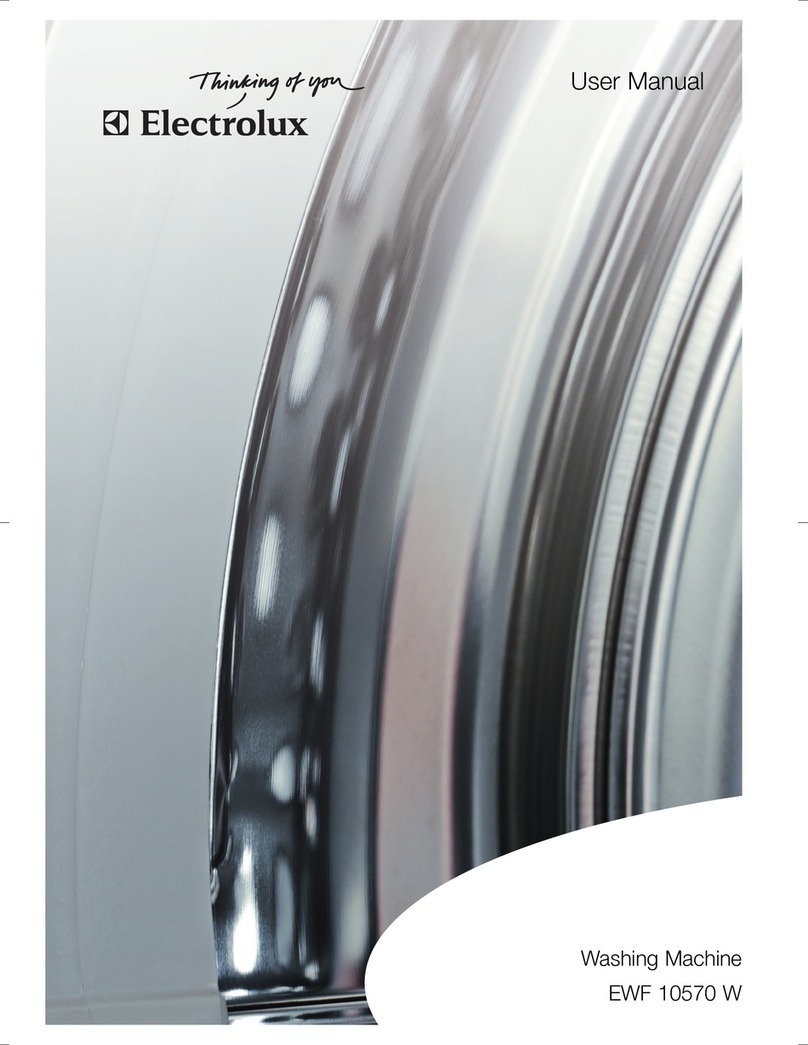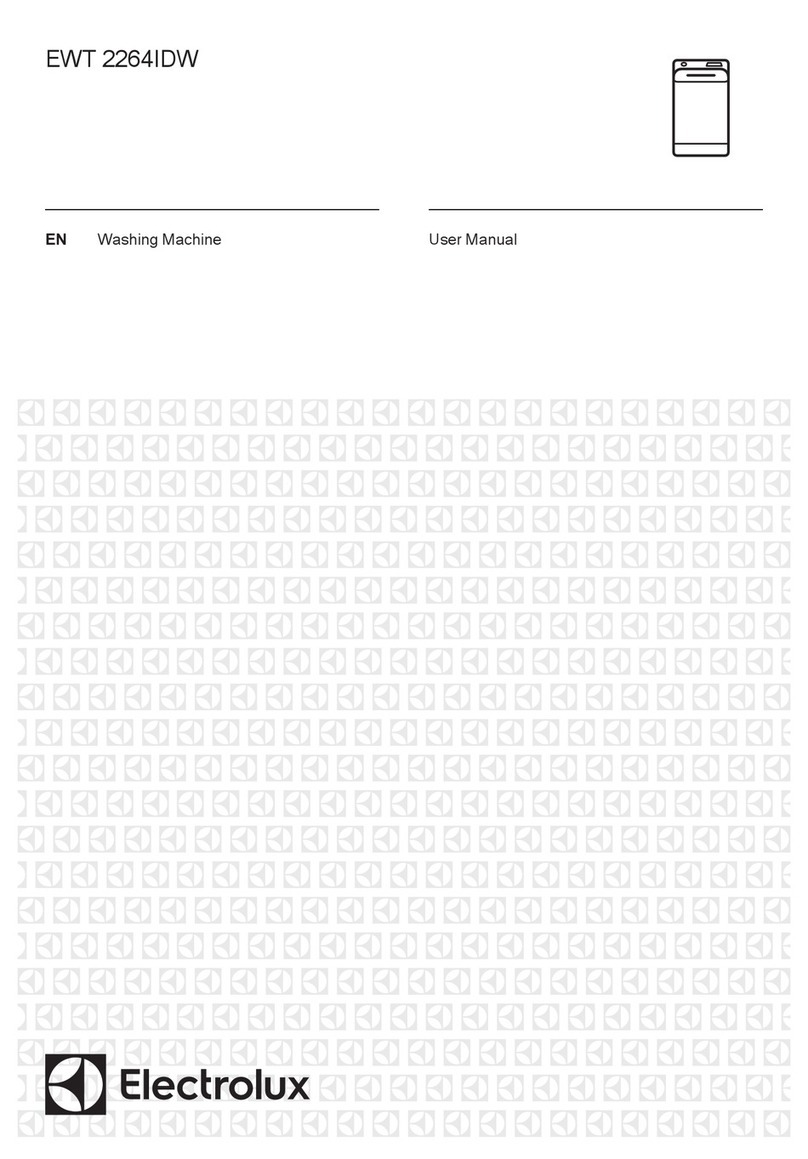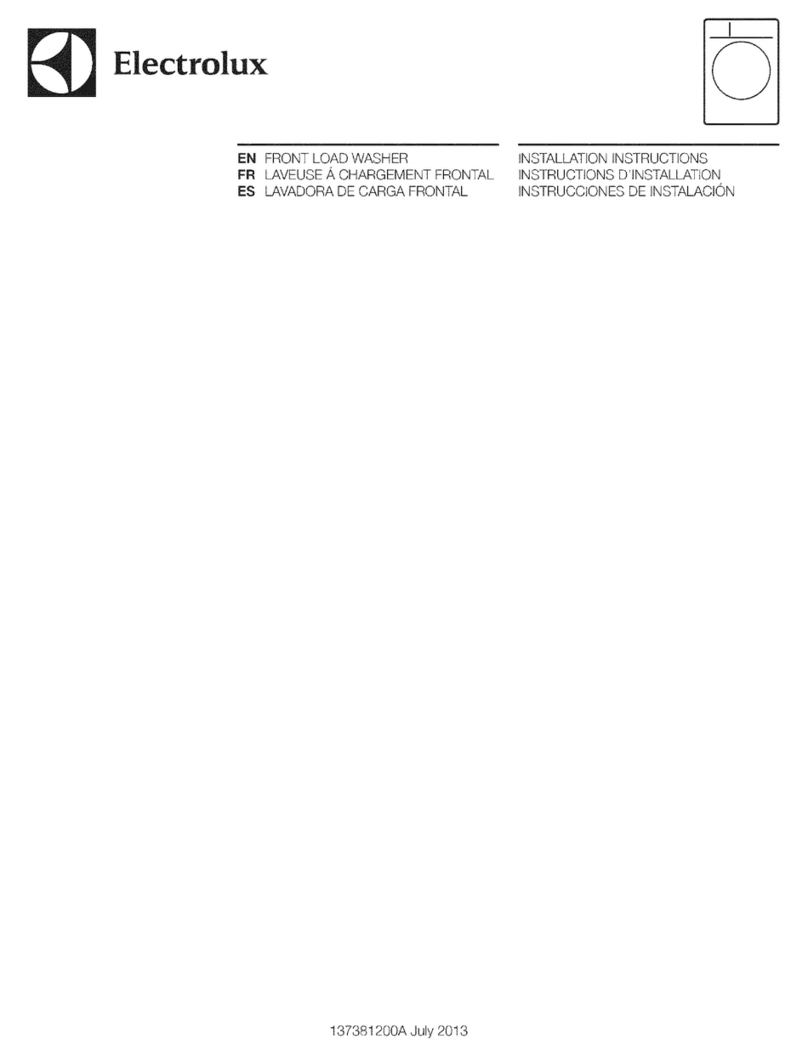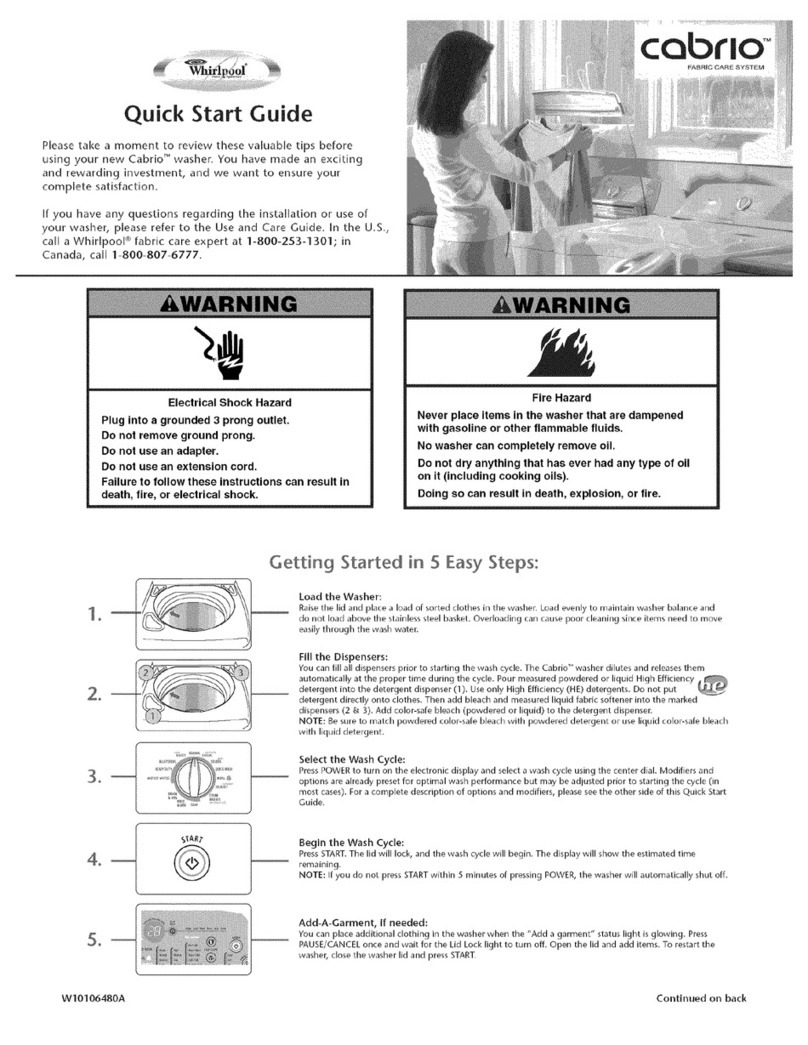
5,
Add
detergent,
bleach
and
fabric
softener
to
automatic
dispenser
following
these
steps:
OPENINGANDCLOSINGTHEDISPENSERDRAWER
•
Slowly
open
the
dispenser
drawer
by
first
sliding
the
safety
latch
to
the
right,
then
pulling
the
drawer
out
until
it
stops.
•After
addinglaundryproducts,slowlyclosethedispenser
drawer.
Closing
the
drawer
too
quickly
could
result
in
early
dispensing
of
bleach
or
fabric
softener.
Note:
From
time
to
time
you
may
see
water
in
the
bleach
and
fabric
softener
compartments.
This
is
a
result
of
the
siphoning
action
and
is
part
of
the
normal
operation
of
the
washer.
B.
DETERGENT
•
Detergent
isf
lushed
from
the
dispenser
at
the
beginning
of
the
cycle.
Either
powdered
or
liquid
detergent
can
be
used.
Note:
Liquid
detergent
will
drain
into
the
washer
drum
as
it
is
added.
•
Adda
low-sudsing,
high-efficiencydetergent
made
for
front-loading
washers
to
the
dispenser
chamber.
Look
for
this
symbol/|0%\
on
tne
detergent
label.
Use
the
cap
or
scoop
provided
bythe
detergent
manufacturerto
measure
the
amount
recommended.
•
Color-safebleach,waterconditioner,detergentbooster
and
enzyme
products
may
be
added
to
the
detergent
compartment.
Avoid
mixing
liquids
and
powders.
•
Detergent
usage
may
need
to
be
adjusted
for
water
temperature,
water
hardness,
load
size
and
soil
level.
•
For
best
results,
avoid
oversudsing.
C
UQUIDBLEACH
•
If
desired,
measure
out
the
recommended
amount
of
liquid
chlorine
bleach
(not
to
exceed
1/3
cup
(80
mL))
and
pour
it
into
the
center
compartment
labeled
"
Liquid
Bleach"
and marked
with
this
symbol^
•
Fill
to
the
mininum
fill
line
(MIN.)for
small
loads.
Fill
to
the
maximum
fill
line
(MAX.)
for large
loads.
Do
not
exceed
the
maximum
fill
line.
Overfilling
can
cause
early
dispensing
of
the
bleach
which
could
result
in
damaged
clothes.
•
Do
not
pour
undiluted
liquid
chlorine
bleach
directly
onto
the
load
or
into
the
drum.
Fabric
damage
can
occur.
•
Add
powder
or
liquid
color-safe
bleach
to
the
detergent
dispenser.
D.
FABRIC
SOFTENER
•
If
desired,
pour
the
recommended
amount
of
fabric
softener
into
the
compartment
labeled
"Fabric
Softener"
and
marked
with
this
symbolflfi
.
•
Fill
to
the
mininum
fill
line
(MIN.)
for
smaTloads.
Fill
to
the
maximum
fill
line(MAX.)
for
large
loads.
Do
not
exceed
the
maximum
fill
line.
Overfilling
can
cause
early
dispensing
of
the
fabric
softener
which
could
result
in
stained
clothes.
•
Do
not
pour
fabric
softener
directly
on
the
wash
load.
•
Use
of
a
fabric
softener
dispensing
ball
is
not
recommended
in
tumble
action
washers.

